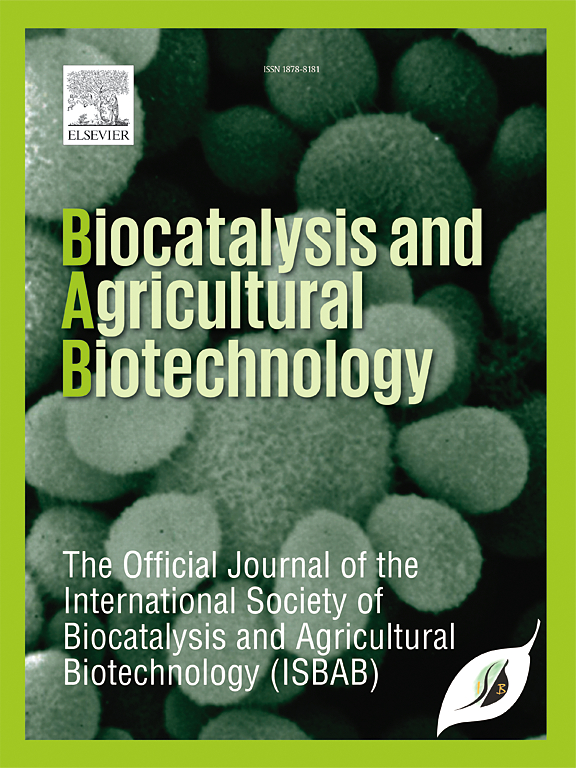Capsicum chinense cell cultures: A biotechnological platform for the sustainable production of bioactive metabolites for the cosmetics market
IF 3.4
Q2 BIOTECHNOLOGY & APPLIED MICROBIOLOGY
引用次数: 0
Abstract
Capsicum species produce a broad range of bioactive metabolites with properties relevant to the cosmetics industry. However, the direct sourcing from Capsicum plants is hindered by the low and variable yields, which depend on genotype and environmental conditions, and by the pungent components of chili plants that act as irritants. We therefore set out to derive callus and cell suspension cultures from the non-pungent variety C. chinense cv. Trinidad Pimento as a sustainable and consistent source. Cultures were grown at the 2-L scale in darkness (D) or with a photoperiodic light source (P) and we prepared hydroethanolic and ethyl acetate extracts for the analysis of metabolic profiles and activities. Comprehensive untargeted metabolomic analysis revealed different clusters of metabolites under D and P conditions, although phenolamides and fatty acids were the most abundant compounds in both cases. Targeted analysis indicated the presence of capsiate, dihydrocapsiate and nordihydrocapsiate as key bioactive products in the hydroethanolic extracts and 18 different carotenoids in the ethyl acetate extracts. Bioactivity assays applied to the hydroethanolic extracts indicated significant antioxidant activity and the ability to inhibit the growth of methicillin resistant Staphylococcus aureus. The extracts were neither cytotoxic nor phototoxic toward BALB/c 3T3 and HaCaT cell lines at concentrations low enough to exert antimicrobial effects. Our work shows that C. chinense cv. Trinidad Pimento cell cultures can produce specific metabolites in response to different cultivation conditions, which will allow their exploitation as a sustainable source of safe and efficacious ingredients for the cosmetics industry.

求助全文
约1分钟内获得全文
求助全文
来源期刊

Biocatalysis and agricultural biotechnology
Agricultural and Biological Sciences-Agronomy and Crop Science
CiteScore
7.70
自引率
2.50%
发文量
308
审稿时长
48 days
期刊介绍:
Biocatalysis and Agricultural Biotechnology is the official journal of the International Society of Biocatalysis and Agricultural Biotechnology (ISBAB). The journal publishes high quality articles especially in the science and technology of biocatalysis, bioprocesses, agricultural biotechnology, biomedical biotechnology, and, if appropriate, from other related areas of biotechnology. The journal will publish peer-reviewed basic and applied research papers, authoritative reviews, and feature articles. The scope of the journal encompasses the research, industrial, and commercial aspects of biotechnology, including the areas of: biocatalysis; bioprocesses; food and agriculture; genetic engineering; molecular biology; healthcare and pharmaceuticals; biofuels; genomics; nanotechnology; environment and biodiversity; and bioremediation.
 求助内容:
求助内容: 应助结果提醒方式:
应助结果提醒方式:


